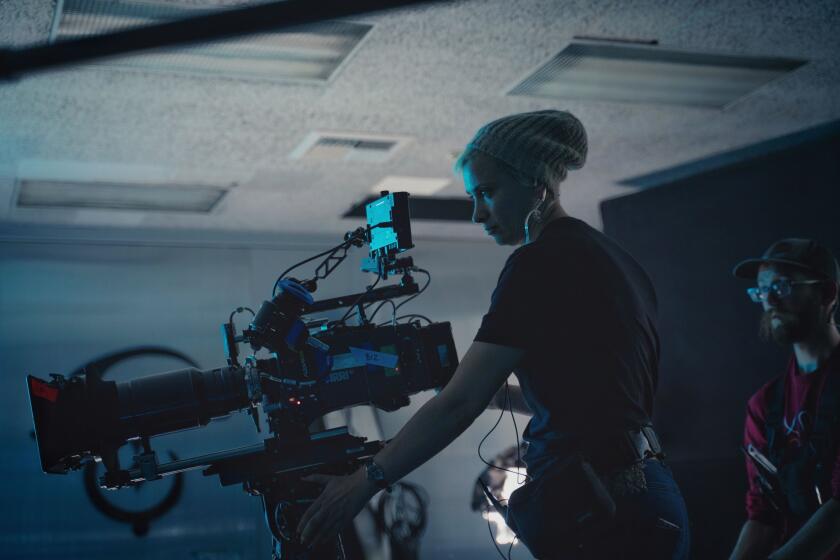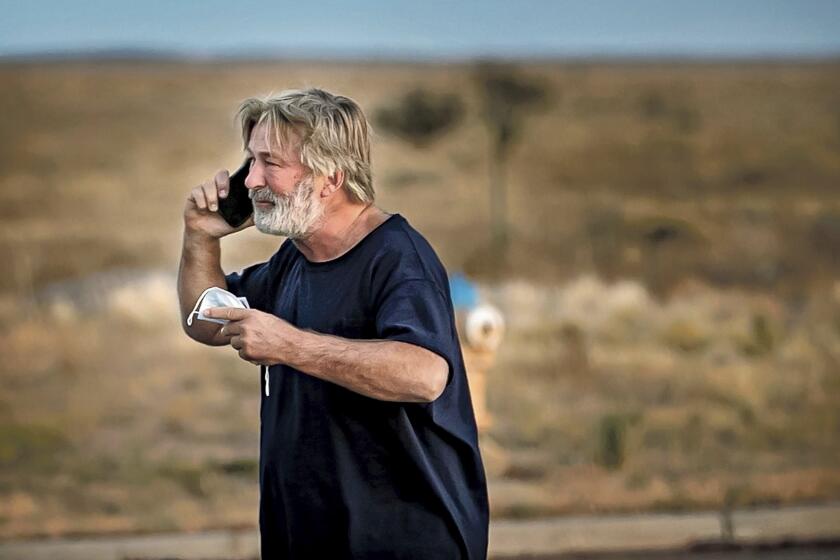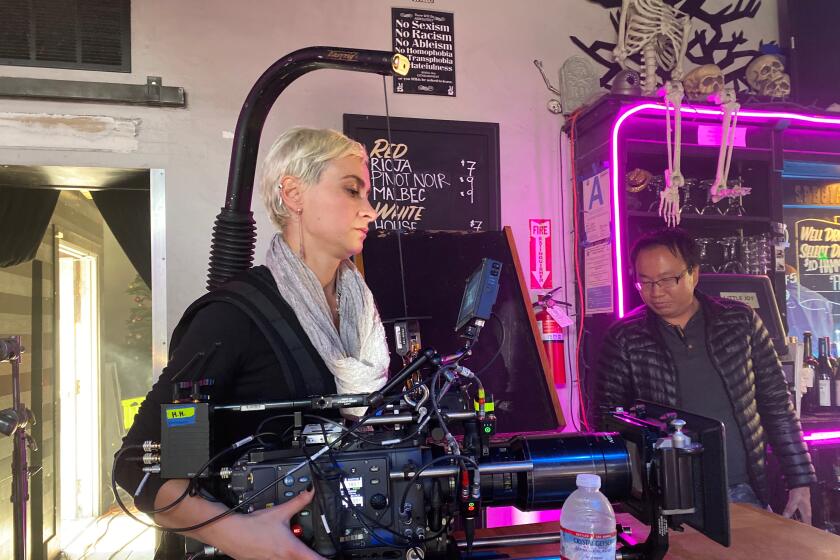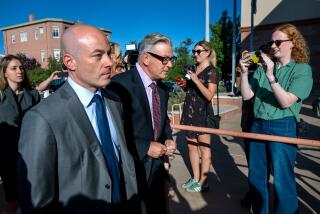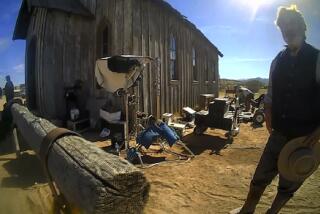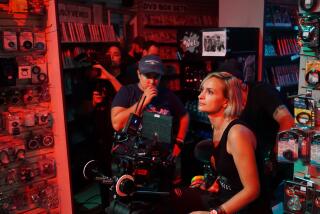Lack of gun safety killed Halyna Hutchins on the set of Alec Baldwin’s ‘Rust.’ How did this happen?

- Share via
Cinematographer Halyna Hutchins was killed by an incident involving a prop gun fired by actor and producer Alec Baldwin on the set of the movie “Rust.” It begs the question: How could this happen?
While it is unclear what type of gun was used in the accident, a deeper look into how the firearms used onscreen by characters are handled safely by actors, prop masters and weapons specialists on film and TV productions offers some clues.
Depending on the project’s budget, time constraints and narrative needs, gun use onscreen is depicted in numerous ways. Non-operational replicas — made of wood, plastic or rubber — are regularly used for scenes filmed at a distance. For closer-range frames, gunfire can be mimicked with the use of Airsoft guns, said a person familiar with handling props and weapons on sets. Visual and sound effects like muzzle flashes, flying shell casings and loud gunfire pops can be added in postproduction.
“There is no fathomable reason to use blanks anymore when it costs like 50 cents to add gunfire in post and even less reason to use them during a day scene where there is little to no interactive light,” Oscar-nominated cinematographer Rachel Morrison said in an Instagram Story post. “If you don’t have enough funding to make a film safely, you shouldn’t be making it. No shot, no scene, and no movie is worth the loss of life.”
Cinematographer Halyna Hutchins was killed on the set of “Rust” in October 2021. A judge dismissed the involuntary manslaughter case against star Alec Baldwin in July 2024.
Still, productions regularly use operational firearms, arguably to add realism to the scene and authenticity to an actor’s performance. When an operational firearm is used on set, a licensed armorer or a prop master is responsible for monitoring every step of its use: loading and unloading the weapon, checking the barrel to avoid any issue with materials left inside after every take, showing its status to actors and assistant directors, instructing actors on its proper use — the latter to maintain the story’s realism as well as everyone’s safety.
Additionally, the armorer or a stunt coordinator choreographs gunfire action sequences, works with the cinematographer to determine which camera angles will minimize risk of injury and ensures that no cast or crew member is in a firing lane, or the path of the weapon, when it is fired, said Michael Lubke, a fight director and stunt coordinator for theater and movies. Anyone in close range usually is required to wear protective items such as shields or safety glasses when the cameras are rolling. “No human should ever be in the firing lane,” Lubke said.
The systems currently in place work well when followed. “Absent some sort of defect on the gun itself or the cartridge misfiring or something like that, there is literally no way this can happen if the people in charge are following safety protocols that have been drafted and in effect for years related to firearms on a set,” said Jeff Harris, an attorney who has represented the families of people who have died on film and TV sets.
“The problem is when people get complacent and don’t follow the systems, then that’s when we have these accidents on movie sets,” he continued. “It’s just unfortunate that we have to have these kinds of things occur before people really say. ‘You know what, we’ve got to follow these written policies and we have to do it to a T. Otherwise, one mistake, somebody dies.’”
Some people in the prop industry said they would prefer that trained firearms specialists be required on all sets with any kind of potentially dangerous weapon, as prop-handling union members also must oversee all the other props in the production. Others would like to see increased safety requirements for California state permits to rent prop guns, saying all that is needed to do so is a background check.
“To add a layer of training and certification in there would not be a terrible thing,” said Kevin Williams, prop department supervisor at UCLA School of Theater, Film and Television, who has no direct knowledge of the incident. “Guns are sort of mysterious to a lot of people, and sometimes your job requires you to work with things that you don’t know. Personally, when I’m out of my depth, I call in experts.”
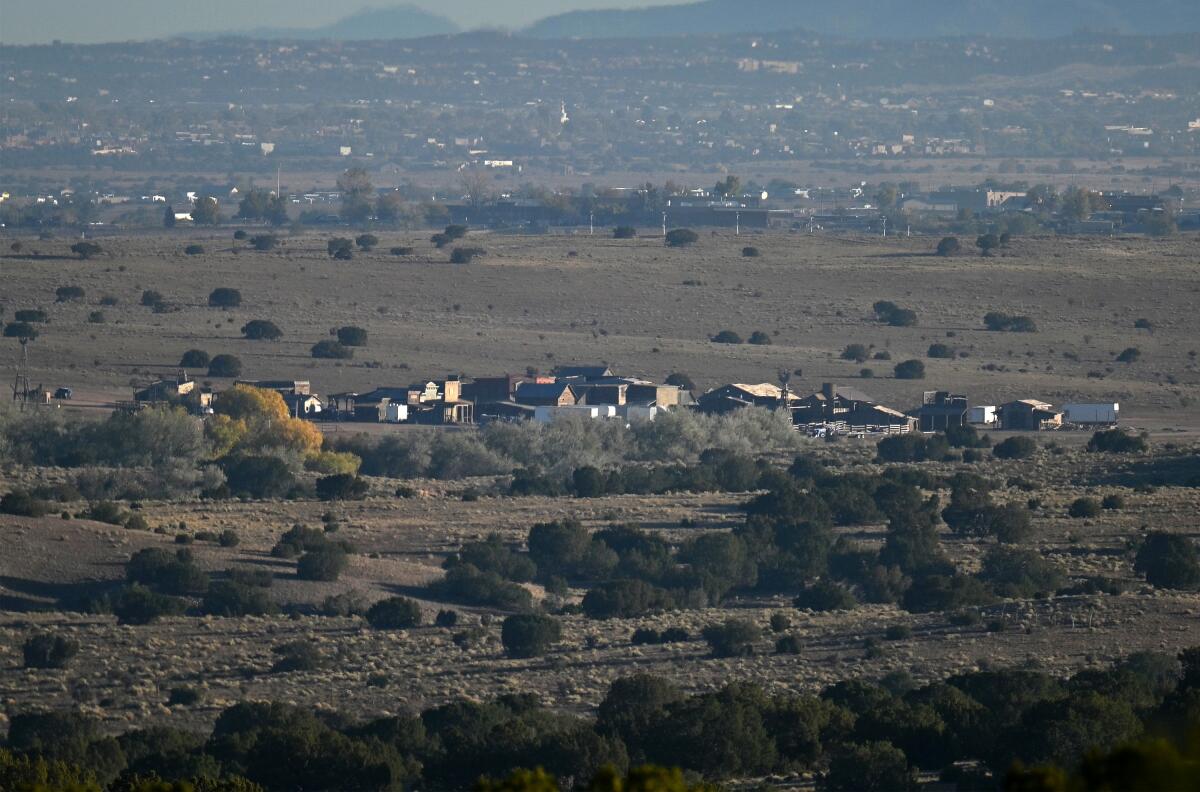
The fatal incident took place on the 12th day of “Rust’s” 21-day New Mexico shoot, which was staffed with an armorer. The Times reported that the industry’s safety protocols, including gun inspections, were not strictly followed on set, and multiple misfires involving prop guns had previously occurred.
“There were no safety meetings, there was no assurance that it wouldn’t happen again,” said a crew member. “All they wanted to do was rush, rush, rush.” Production on the movie has been halted indefinitely.
According to the union representing prop makers and other crew members, the production’s props, set decoration, special effects and construction departments were staffed by nonunion crew members at the time of the fatal incident. That morning, a half-dozen camera crew workers walked off the Bonanza Creek Ranch set, frustrated for days by the low-budget film’s long hours, withheld paychecks and a broken promise of nearby hotel rooms. Union crew members were ordered to leave the set and were swiftly replaced by nonunion crew members.
The situation raises questions and concerns about labor practices on Hollywood sets and the importance of taking care of below-the-line workers.
“If you have a crew member who’s exhausted and maybe afraid of not getting their next job, especially after nearly two years of not having work, it puts them in a really precarious position to make a good judgment call,” said Williams. “Timelines and demands of a project being what they are, and people’s desire to continue to work and get that next project and keep a roof over their head, pushes them into questionable territory about what they’re comfortable doing.”
At least one of the camera operators complained last weekend to production managers about gun safety on the set.
Productions using operational firearms can opt for those intentionally designed to fire blank cartridges — shell casings loaded with gunpowder — or decommissioned firearms tweaked to shoot them. Live ammunition is not allowed on any set.
When blanks are discharged, they create the distinct sound of gunfire and provide the shooter with real recoil, and the gunpowder combusts, causing a muzzle flash. Unlike a real round, there is no projectile in front of the gunpowder; it instead has a cotton or paper wadding that can come as a quarter load, half load or full load, said action director, stunt coordinator and stuntman Conrad Palmisano. Anyone firing a blank should be at least 20 feet away from others.
At closer distances, that shot can produce flames, gases and metal debris from burned and unburned flakes of gunpowder. “That energy coming out of a barrel can be dangerous,” said Lubke of such a situation, which is how actor Jon-Erik Hexum died on the set of the TV show “Cover-Up” in 1984; he picked up a .44 caliber handgun during a delay in filming, spun the round to simulate Russian roulette with the barrel against his temple and pulled the trigger. The force of the blast fractured his skull and he died in hospital.
A gun used for filming also can be loaded with dummy rounds, which are designed to look like real bullets but contain no gunpowder. Still, it is possible for a dummy round to come apart — lead can separate from the brass and become a deadly projectile. Such was the cause of death of actor Brandon Lee on the set of the movie “The Crow” in 1993; the projectile tip of a dummy round was accidentally lodged in a gun chamber, and it was then propelled out of the gun by a blank cartridge.
“There’s plenty of safety protocols out there that should be in place,” said Palmisano, who helped form the Screen Actors Guild’s stunt and safety committee. “Whoever handed the loaded gun to Alec Baldwin should be held responsible to some level. What level, I’ll leave that to the court.”
After the incident, Hutchins and injured director Joel Souza were rushed to the hospital. Souza has since been discharged, but Hutchins — who was 42 and filmed indie features including “Archenemy,” “Blindfire” and “The Mad Hatter” — later died from the wound. Bandar Albuliwi, a friend of Hutchins’ who also graduated from the American Film Institute Conservatory, launched a Change.org petition to ban the use of real firearms on set — a policy that the ABC series “The Rookie” has since adopted.
“We need to make sure this never happens again,” Albuliwi wrote in the petition. “Change needs to happen before additional talented lives are lost.”
Halyna Hutchins, the cinematographer killed on set of an Alec Baldwin movie, was going to be ‘very famous,’ a director who worked with her said.
Staff writer Richard Winton contributed to this report.
More to Read
Only good movies
Get the Indie Focus newsletter, Mark Olsen's weekly guide to the world of cinema.
You may occasionally receive promotional content from the Los Angeles Times.
